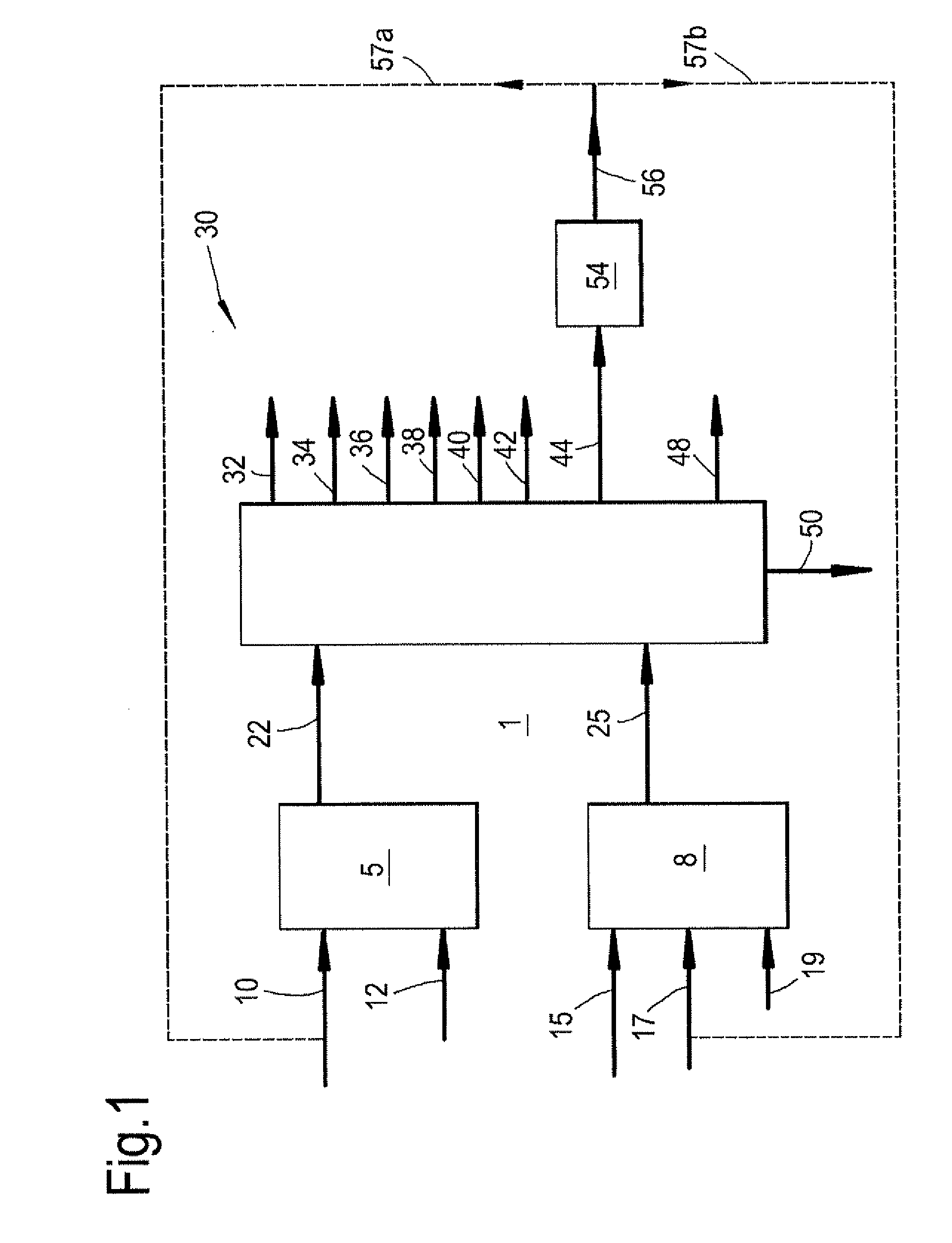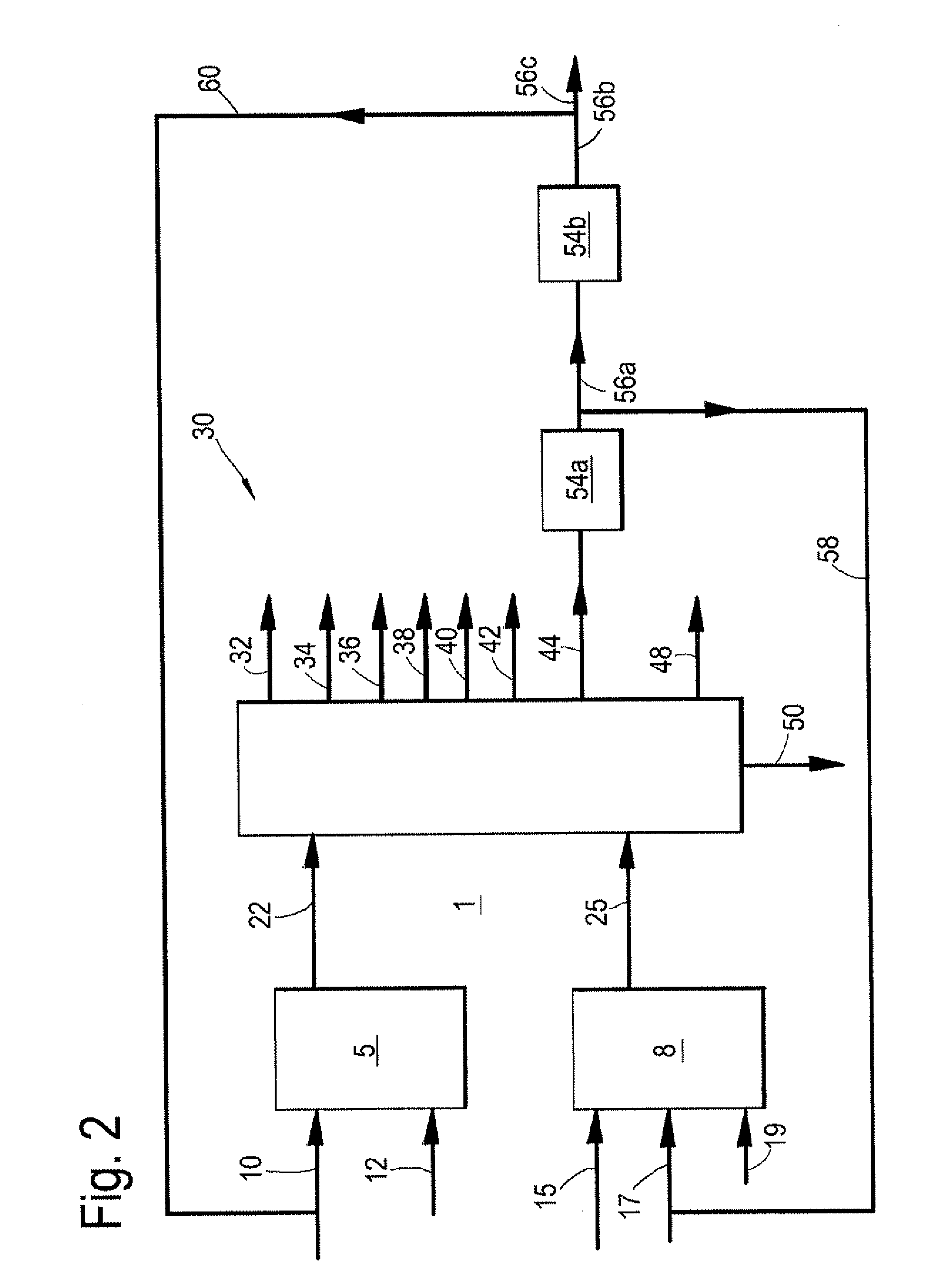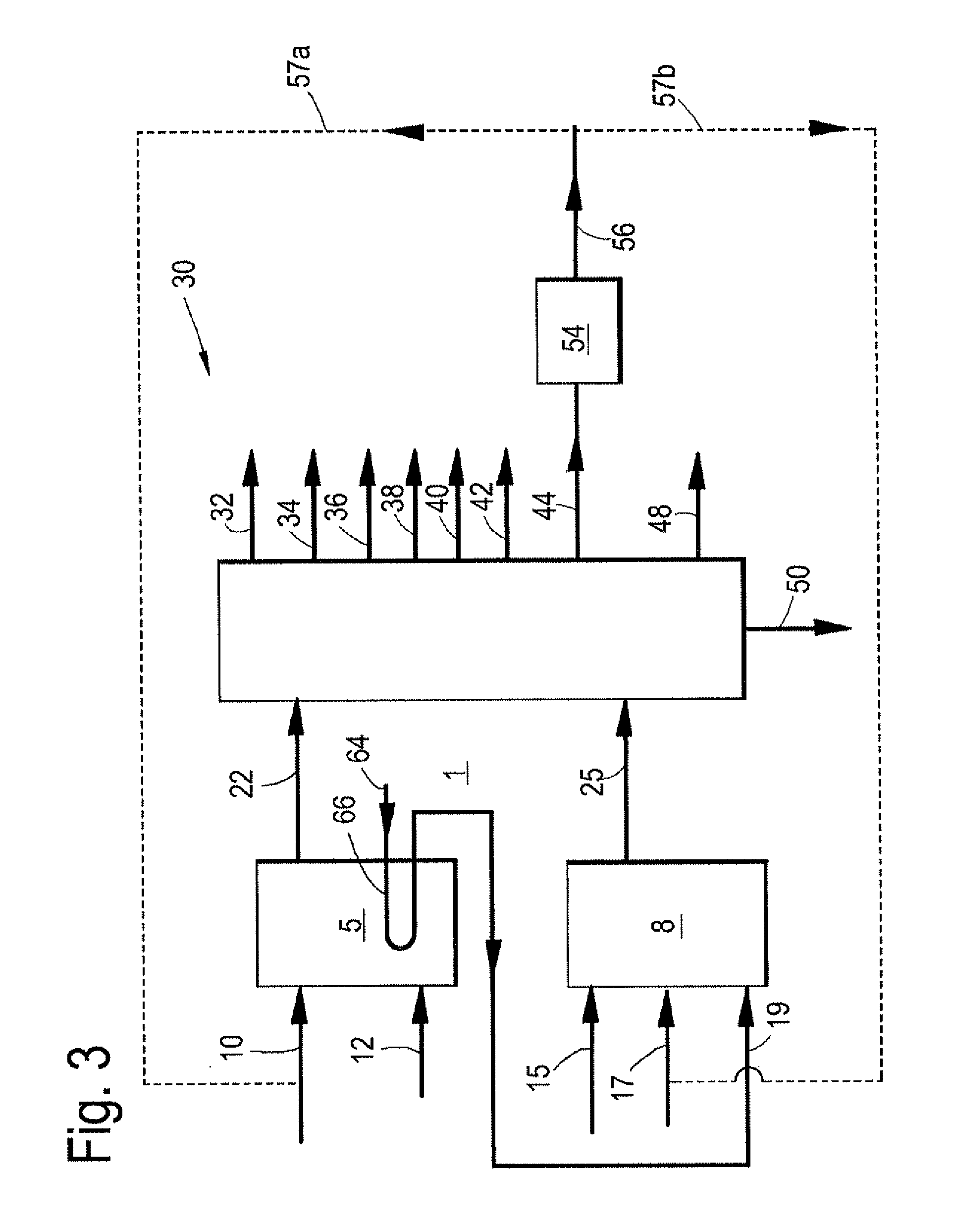Process for the preparation of a lower olefin product
a technology of olefin and product, applied in the field of process for the preparation of a lower olefin product, can solve the problems of insufficient size to build new plants of sufficient size to achieve the effect of economic scale, and the supply of ethane originating, so as to achieve the effect of less by-products, lower severity, and higher selectivity of the cracking step alone to ethylen
- Summary
- Abstract
- Description
- Claims
- Application Information
AI Technical Summary
Benefits of technology
Problems solved by technology
Method used
Image
Examples
example 1
[0059]In this example the effect of operating an ethane cracker at lower severity is shown. Selectivity of cracking to various products in a single pass through the cracking zone is shown in Table 1. All selectivity data represent the weight percentage of the respective component in the cracking products, based on total products not counting unconverted ethane. Clearly, the selectivity to ethylene, propylene, and butylene increases with decreasing severity, wherein butylenes can be further converted to ethylene and propylene in accordance with the present invention. An ethane conversion of 65 wt % is known from the article “Integration of the UOP / HYDRO MTO Process into Ethylene plants” by C. N. Eng et al., referenced above.
TABLE 1Ethane Conversion (wt %)40.050.055.070.0Ethylene85.983.782.477.8SelectivityHydrogen6.46.46.46.3SelectivityMethane3.03.94.47.6SelectivityPropylene1.01.31.41.6SelectivityButylene1.51.92.22.9SelectivityC2 = +C3 = +C4 =88.486.986.082.3SelectivityC5+ make per0.8...
example 2
[0060]In this example the effect of operating the ethane cracker at low severity on the conversion of co-fed butane is shown. Selectivity of cracking of co-fed butane (50% n-butane and 50% iso-butane) in a single pass through the cracking zone to various products is shown in Table 2. All selectivity data represent the weight percentage of the respective component in the cracking products, based on total products not counting unconverted butane. It can be seen that at lower severity more total C2-C4 lower olefins are produced from butane, and less by-products methane, C5+ are formed.
TABLE 2Ethane Conversion50.060.065.0(wt %)Butane Conversion93.997.898.9(wt %)Ethylene36.4%38.0%38.4%SelectivityMethane 6.5% 7.3% 7.7%SelectivityPropylene14.2%10.2% 8.3%SelectivityButylene 7.4% 5.7% 5.0%SelectivityC2 = +C3 = +C4 =58.0%54.0%51.8%SelectivityC5+ make per ton5.42%6.77%7.38%olefin
example 3
[0061]In this example the product distribution of cracking n-butane and iso-butane under low severity conditions is shown. Selectivity of cracking of n-butane and iso-butane, respectively at 50 wt % and 90 wt % conversion in a single pass through the cracking zone to various products is shown in Table 3. All selectivity data represent the weight percentage of the respective component in the cracking products, based on total products not counting unconverted butane.
[0062]The data show that the selectivity to ethylene, propylene, and butylene increases with decreasing severity, wherein butylenes can be further converted to ethylene and propylene in accordance with the present invention. Moreover, iso-butane selectivity to butylene increases significantly, which is valuable recycle feedstock to the OTO conversion system. Methane on the other hand is significantly reduced. Iso-butane cracking, which at higher conversions produces less of the valuable lower olefins, produces at 50% selec...
PUM
| Property | Measurement | Unit |
|---|---|---|
| Fraction | aaaaa | aaaaa |
| Fraction | aaaaa | aaaaa |
| Fraction | aaaaa | aaaaa |
Abstract
Description
Claims
Application Information
 Login to View More
Login to View More - R&D
- Intellectual Property
- Life Sciences
- Materials
- Tech Scout
- Unparalleled Data Quality
- Higher Quality Content
- 60% Fewer Hallucinations
Browse by: Latest US Patents, China's latest patents, Technical Efficacy Thesaurus, Application Domain, Technology Topic, Popular Technical Reports.
© 2025 PatSnap. All rights reserved.Legal|Privacy policy|Modern Slavery Act Transparency Statement|Sitemap|About US| Contact US: help@patsnap.com



